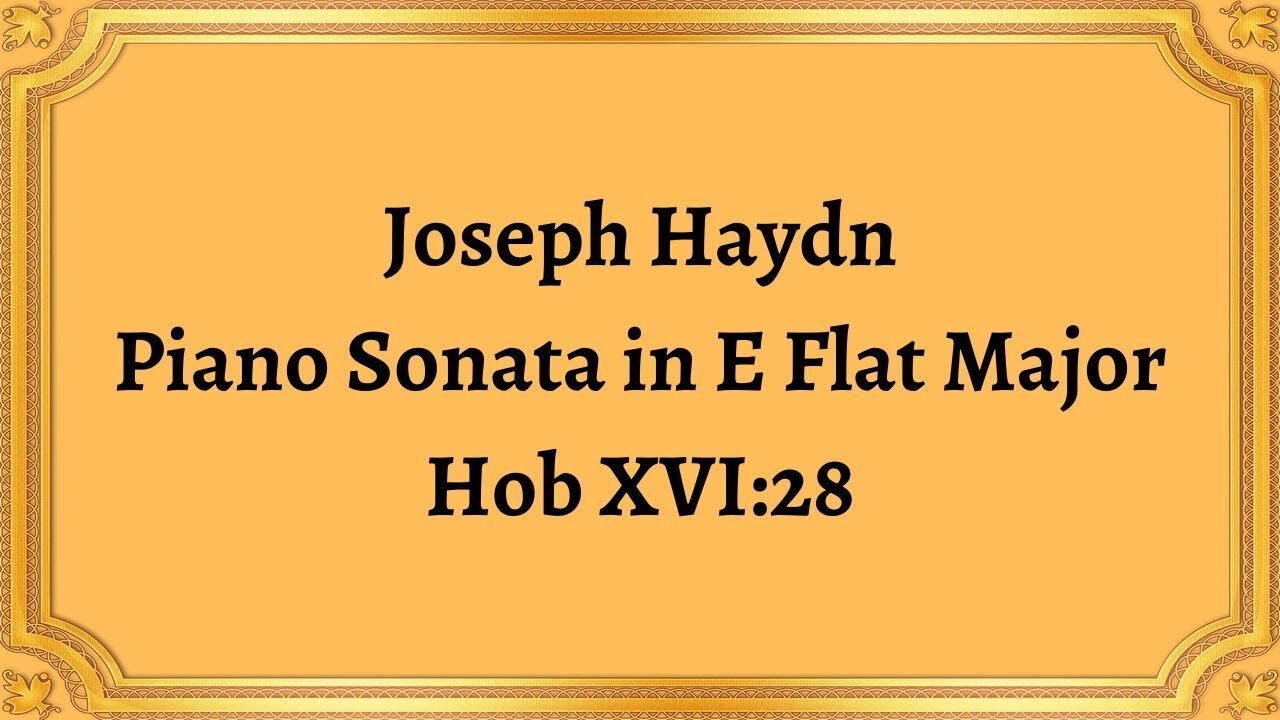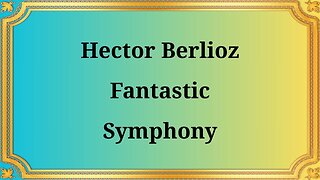Premium Only Content

Joseph Haydn Piano Sonata in E Flat Major, Hob XVI:28
#JosephHaydn #PianoSonata #EFlatMajor #HobXVI28 #classicalmusic #musiccomposition #harmoniclanguage #technicaldifficulty #emotionaldepth #musicalexpression #musicanalysis #musictheory #musicappreciation #musiceducation #musicperformance #musicology #musichistory
Joseph Haydn’s Piano Sonata in E Flat Major, Hob XVI:28 is a masterpiece of piano music, composed in 1776. This sonata is a fine example of Haydn's mature style, characterized by his mastery of form, harmonic language, and musical expression.
The Piano Sonata in E Flat Major is composed of three movements that showcase Haydn's musical skill and creativity. The first movement, Allegro moderato, is in sonata form, with a memorable melody that is developed throughout the movement. The second movement, Minuet and Trio, follows a traditional ABAB form and offers a pleasant contrast to the first movement. The third and final movement, Presto, is a lively and virtuosic movement that concludes the sonata with a burst of energy and excitement.
One of the most noticeable features of the Piano Sonata in E Flat Major is the complexity of its harmonic language. Haydn was known for his innovative approach to harmonies, and this sonata is no exception. The piece is full of extended chords, chromaticism, and subtle modulations that create a dynamic and expressive sound.
In terms of technical difficulty, the Piano Sonata in E Flat Major presents significant challenges for the performer. The sonata requires exceptional control of the keyboard, with rapid scale passages, lush arpeggios, and precise phrasing. One of the most challenging sections of the sonata is the complex development section of the first movement, which demands a high level of technical proficiency.
Beyond its technical excellence, the Piano Sonata in E Flat Major is also notable for its emotional depth. Haydn was a master of musical expression, and this sonata is no exception. The piece moves effortlessly between joy and sorrow, between lightness and gravity, reflecting the complexity of human experience.
In conclusion, Joseph Haydn’s Piano Sonata in E Flat Major, Hob XVI:28 is a remarkable example of his mature musical style. The sonata is a testament to his mastery of form, harmony, and musical expression. Its harmonic language is complex and innovative, its technical demands are formidable, and its emotional depth is profound. A performance of this sonata requires a talented pianist who can navigate the challenges of the piece and communicate its musical beauty and expressive power effectively.
You have the opportunity to support the channel https://destream.net/live/RadSiarAl/donate
-
 48:22
48:22
Classical music_Music Inspiration
1 month agoHector Berlioz Fantastic Symphony
801 -
 55:22
55:22
The Rubin Report
1 hour agoTsunami Evacuation Creates Massive Oprah Winfrey Controversy
6.38K4 -
 LIVE
LIVE
The Mel K Show
40 minutes agoMORNINGS WITH MEL K - Signal to Noise: Parasitic Global Governance Agenda 2030 Undeterred & UnAmerican 7-30-25
610 watching -
 LIVE
LIVE
LFA TV
15 hours agoLFA TV ALL DAY STREAM - WEDNESDAY 7/30/25
5,009 watching -
 LIVE
LIVE
The Shannon Joy Show
1 hour ago🔥🔥The Roots Of Technocracy EXPOSED. Dark Enlightenment & The Game B Techno-Beast. Top Experts Patrick Wood, Courtenay Turner & Joe Allen LIVE & Exclusive! 🔥🔥
144 watching -
 LIVE
LIVE
Grant Stinchfield
49 minutes agoLawyers, Lies & Deleted Tweets: The Russia Hoax House of Cards Is Collapsing
26 watching -
 LIVE
LIVE
Tudor Dixon
1 hour agoMarsha Blackburn on Ending DEI & Fighting Political Indoctrination | The Tudor Dixon Podcast
164 watching -
 DVR
DVR
Bannons War Room
5 months agoWarRoom Live
30.5M7.47K -
 DVR
DVR
Benny Johnson
2 hours agoD-DAY: BOMBSHELL Release Expected TODAY That Will Change EVERYTHING, Trump Posts Hillary Behind Bars
34.5K47 -
 LIVE
LIVE
JuicyJohns
3 hours ago $1.86 earned🟢#1 REBIRTH PLAYER 10.2+ KD🟢$500 GIVEAWAY
101 watching